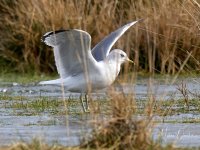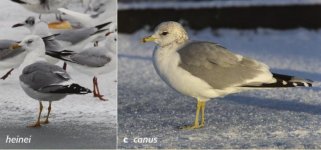Milan
Member
Hi fellow bird enthusiasts .
.
I noticed this gull on a partially flooded (and frozen) meadow just on the edge of Cambridge (UK) this morning. This one attracted my attention as it landed, briefly, not far away from a small group of black headed gulls. Based on the overall appearance I initially thought it might be Common Gull however after closer inspection of the image I made I'm leaning toward Ring-billed gull (colour of legs, light coloured iris). I'm not an gull ID expert so any comments and help with ID would be appreciated.
Thank You in advance.
I noticed this gull on a partially flooded (and frozen) meadow just on the edge of Cambridge (UK) this morning. This one attracted my attention as it landed, briefly, not far away from a small group of black headed gulls. Based on the overall appearance I initially thought it might be Common Gull however after closer inspection of the image I made I'm leaning toward Ring-billed gull (colour of legs, light coloured iris). I'm not an gull ID expert so any comments and help with ID would be appreciated.
Thank You in advance.






